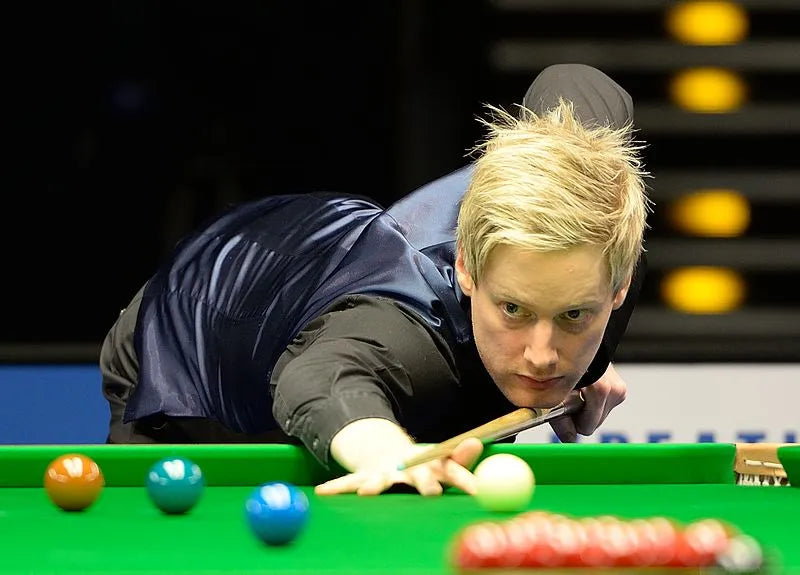
Mastering the Screw (Draw) Shot in Cue Sports: A Guide for Pool, Snooker, and Beyond
Share
The screw shot—often referred to in pool circles as a "draw shot"—is one of the most versatile and essential tools in any cue sport player's skillset. Whether you're playing 8-ball, 9-ball, or snooker, learning to apply controlled backspin to the cue ball opens up countless positional play opportunities. This article breaks down how the screw shot works, how to execute it with precision, and when to use it to control the table.
What Is a Screw (Draw) Shot?
In cue sports, a screw shot (called a draw shot in US pool terminology) is when you strike the cue ball below center, imparting backspin. This causes the cue ball to reverse direction after contacting the object ball, "screwing" or "drawing" back toward you. In pool, it's often used to stay in line with your runout or to avoid scratches. In snooker, it helps maneuver around tightly packed balls or line up for the next red or color.
When Should You Use a Screw Shot?
A screw shot is ideal when:
- You want to bring the cue ball back toward you after a shot.
- You need to avoid sending the cue ball too far up-table.
- You’re maneuvering around blockers or traffic.
- You’re setting up a follow-up shot that requires short-range cue ball control.
Whether you’re playing on a 7-foot bar table or a full-size snooker table, the fundamentals are the same—only the level of finesse and table responsiveness might differ.
The Science Behind It
When you hit below the center of the cue ball, you apply backspin. As the ball travels forward, this spin gradually slows its movement until the moment of impact with the object ball. At that point, if the backspin is still active, the cue ball will reverse direction and come back toward you.
Key variables that affect a screw/draw shot:
- Cue ball cleanliness – Dirty balls generate less spin.
- Cloth condition – Faster tables (like new Simonis or Championship Tour Edition cloths in pool, or Strachan in snooker) respond better to finesse shots.
- Tip quality – A soft or well-shaped tip will grip the cue ball more effectively.
- Chalk – Proper chalking reduces miscues when striking below center.
How to Play a Screw (Draw) Shot
Here’s a step-by-step guide:
- Chalk Up – Use good quality chalk and ensure even coverage. A miscue from low striking is more common than you think.
- Bridge Firmly – A stable bridge (whether open or closed) helps maintain cue control.
- Cue Low – Level your cue as parallel to the table as possible and aim low on the cue ball—just above the bottom edge.
- Smooth, Controlled Stroke – Accelerate through the ball with a firm but smooth motion. Avoid jabbing.
- Follow Through – A proper follow-through ensures better energy transfer and spin retention.
- Practice Distance Control – Work on returning the cue ball different distances by adjusting how low you hit and how firmly you strike.
Common Mistakes to Avoid
- Striking too low without a level cue – This often causes the cue tip to dig into the cloth or miscue.
- Rushed backswing – Smoothness is more important than brute force.
- Neglecting follow-through – Cutting your stroke short reduces backspin.
Advanced Tips
- Screw with side spin (English) – Once you're comfortable, try combining draw with left or right spin to come off rails at specific angles.
- Punch Screw – A slightly elevated cue can create a short, snapping backspin effect—popular in pool when you want to draw short distances without overspinning.
Practicing the Screw Shot
If you're new to screw/draw, start with simple straight shots. Place the object ball near the pocket and the cue ball 12–18 inches away. As your control improves, increase the distance or add angles. Try drills like:
- Draw back to a line – Place a line or chalk mark behind the object ball and aim to draw the cue ball back to it consistently.
- Three-ball drill – Pot a ball and draw the cue ball back for a second, then set up a third shot. Great for learning sequence play.
Final Thoughts
The screw shot isn’t just a flashy trick—it’s a foundation of cue ball control. Pool players use it constantly to set up their next shot, and snooker players rely on it to navigate tight angles and stay in rhythm. Mastering it will give you a massive edge in any cue sport, helping you maintain position, avoid scratches, and play smarter runs.
Whether you play 8-ball in your local bar, compete in USAPA tournaments, or enjoy the finesse of snooker, a good draw shot is a sign of a thinking, skilled player.